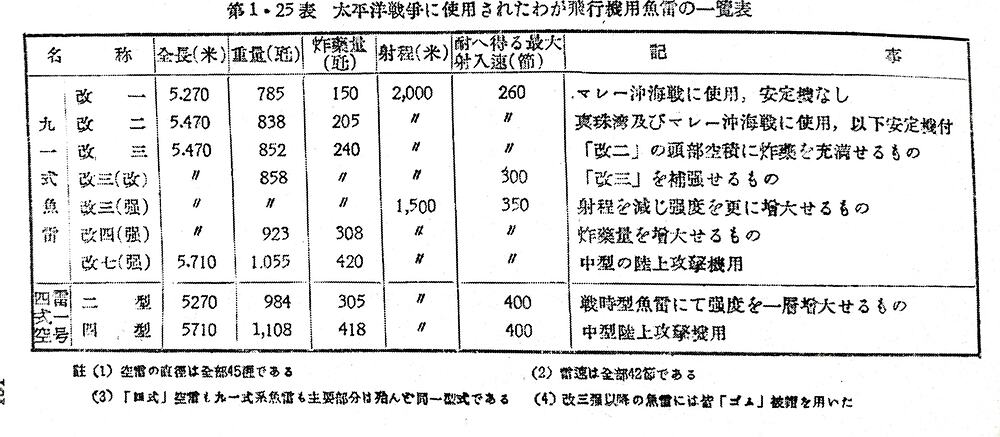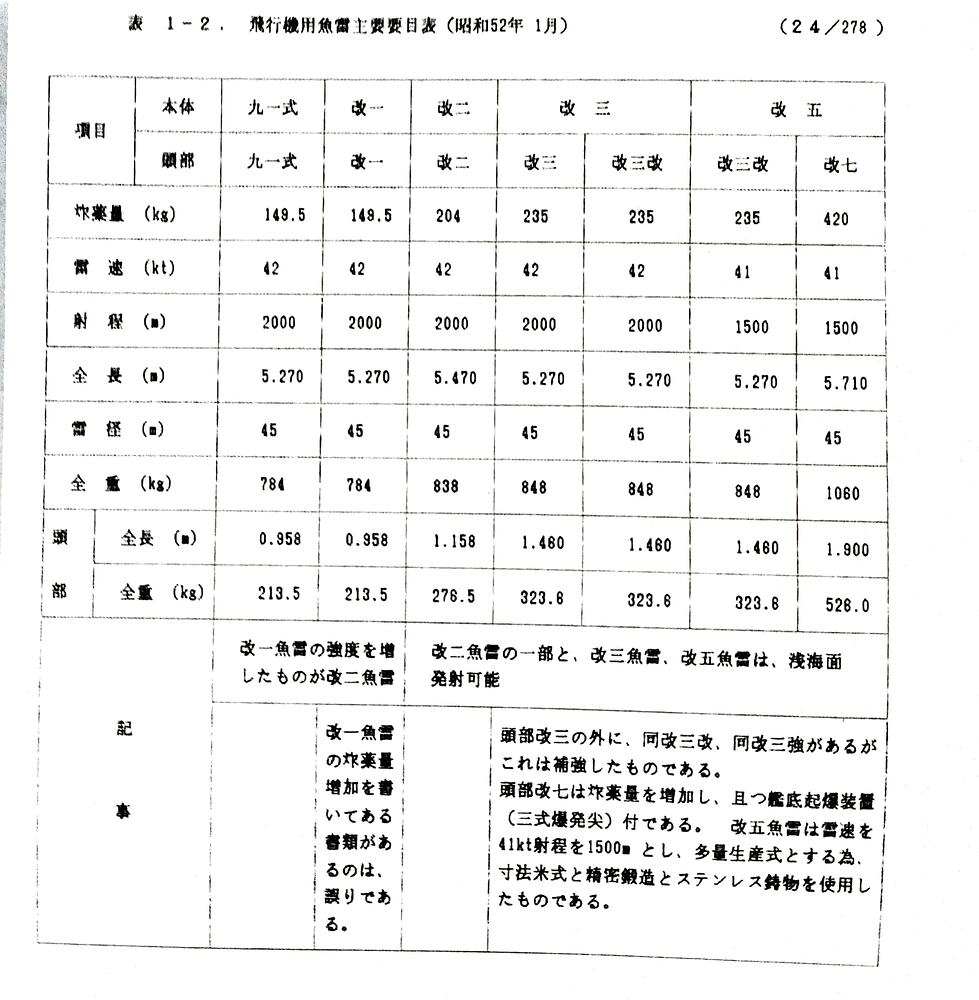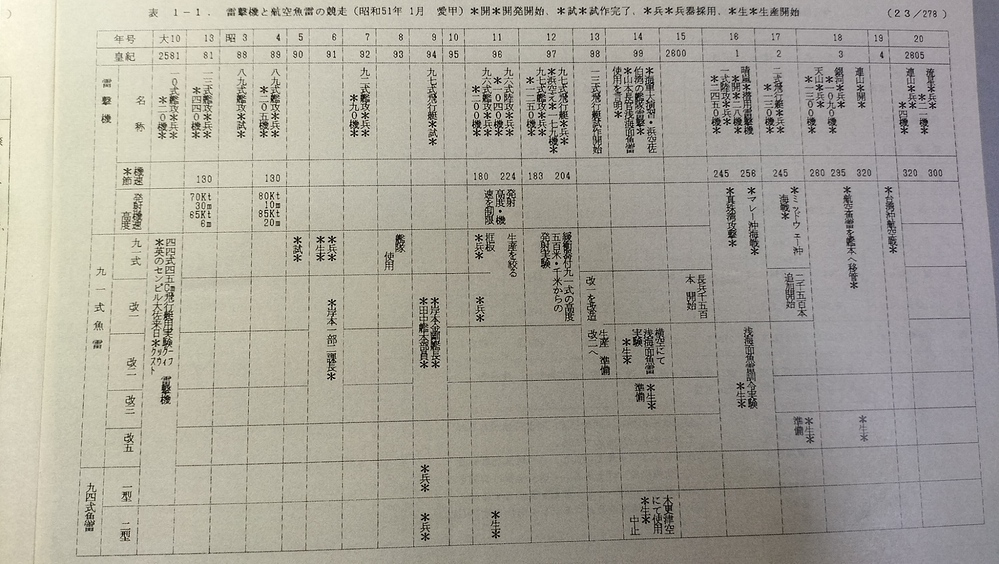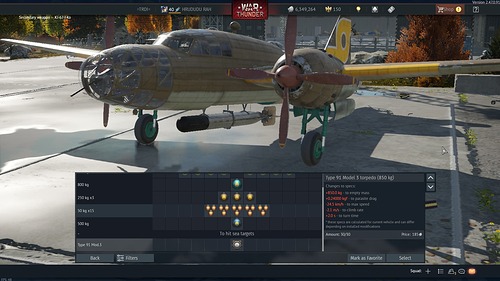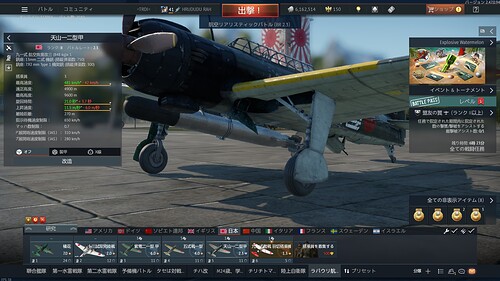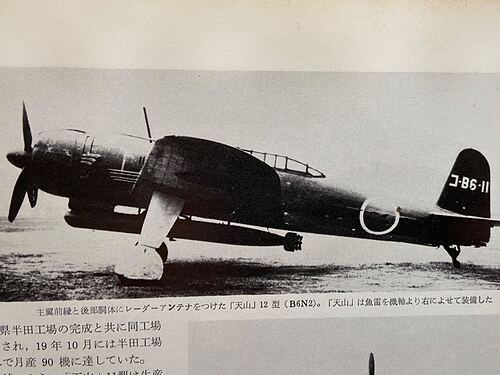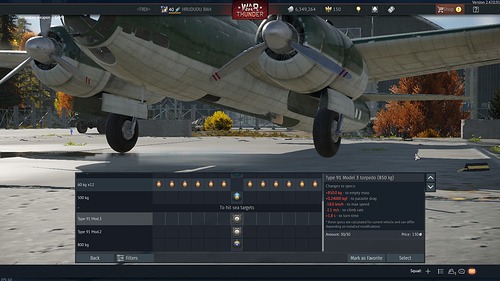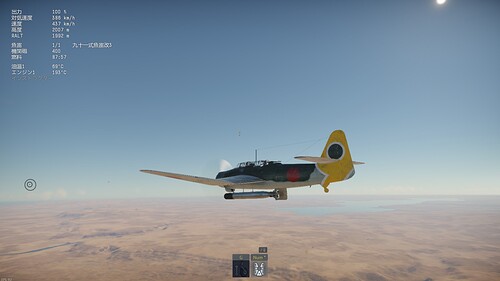- Yes
- No
Type91 Torpedo Model 7 “九一式航空魚雷改七”
I wrote Type 91 Torpedo Model 7, but this is a bit confusing. The correct description would be Type 91 Torpedo Model 5 with Model 7 Warhead 九一式航空魚雷改五(改七弾頭).
Reason
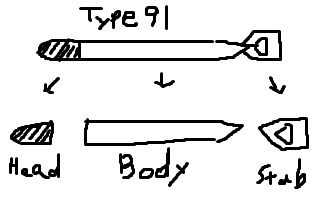
History
The Type 91 torpedo, which began development in 1931, was developed based on the aerial torpedo that Technical Captain Naruse had seen while studying in the UK. At the start of the war, the Type 91 torpedo had already been developed into Model 3, but further improvements were needed in light of future developments.
The torpedo, which was being designed by four people including Chief Designer Ikeda of the Naval Technical Department, was the Type 91 Torpedo Model 4, and the project was being carried out so as not to interfere with their main task of developing torpedoes for ships. However, Lieutenant Commander Aiko of the Air Headquarters obtained information about the Model 4 and opposed it, citing the following reasons:
- As the war front expands, the demand for aerial torpedoes will likely increase significantly.
- Following the attack on Pearl Harbor and the Battle of Malay, there are now requests to equip carrier-based bombers, fighters, and seaplanes, which previously did not carry torpedoes, with torpedoes.
- For the above reasons, the new aerial torpedo must be mass-producible.
- It is necessary to minimize machining and utilize precision forging.
- We want to reduce the amount of copper material and replace it with stainless steel.
- We want to abolish the imperial system and standardize on the metric system.
- Compared to the standard Type 91 Model 3 torpedo, we will compromise on torpedo performance, reducing the speed by 1 knot to 41 knots and the range by 500 meters to 1.5 km. In exchange, we will increase the amount of explosive and achieve an increased possible release speed.
- Two types of warheads will be available: one will be an enhanced version of the Model 3 warhead, and the other will be extended in length and have an increased explosive charge capacity so that it can be mounted on an attack aircraft. Furthermore, this longer warhead will be able to be fitted with the ship’s bottom detonator, which is due to be completed soon.
- The new torpedo will inherit the features of the Model 3 and be equipped with an eight-cylinder engine, be easy to handle, and be practical enough to withstand the brutal use of warriors.
Such is the strong resolve they have shown. (In particular, increasing the explosive charge was said to be important in defeating the strengthened anti-torpedo defenses of Allied battleships.)
In response to this opinion, development of the Model 4 was effectively canceled, but opinions on the new torpedo were not readily agreed upon. Meanwhile, it was decided that the leadership of these weapons development projects would be transferred from the Naval Technical Department to the Air Headquarters. The Air Headquarters named the new torpedo under their control the Model 5.
Thus began the planning of the Type 91 Model 5 torpedo. The Nagasaki Arsenal was responsible for everything from planning to prototyping and production, with supervision provided by the Air Headquarters. Chief Designer Terada was in charge of the torpedo’s overall technology, Technical Major Watanabe was in charge of mass production of torpedoes, and Engineer Nakao was the production chief. Lieutenant Colonel Aiko oversaw everything as section chief.
Thanks to this flawless system, the Model 5 torpedo was completed as planned, and deliveries to each unit began.
Ultimately, the initial requirements were met by preparing a Model 7 warhead equipped with a 420 kg explosive, in addition to the Model 3 warhead, which had been reinforced. The Model 7 warhead was also capable of being equipped with the Type 3 explosive point, which had been successfully developed.
Of course, what I am proposing this time is a torpedo equipped with a Model 7 warhead.
Spec
| Body | Head | Explosive(kg) | Speed(kt) | Range(m) | Length(mm) | Head length(mm) | Diameter(m) | Mass(kg) | Max entry speed(kt) |
|---|---|---|---|---|---|---|---|---|---|
| Model 3 | Model 3 | 240 | 42 | 2,000 | 5,270(5,470) | 1,460 | 0.45 | 852 | 260 |
| Model 3 | Model 3 (Kai) | 240 | 42 | 2,000 | 5,270(5,470) | 1,460 | 0.45 | 858 | 300 |
| Model 3 | model 3 (Strong) | 240 | 42 | 1,500 | 5,270(5,470) | 1,460 | 0.45 | 858 | 350 |
| Model 5 | Model 3 (Enhanced) | 240 | 41 | 1,500 | 5,270(5,470) | 1,460 | 0.45 | 858? | 350 |
| Model 5 | Model 7 | 420 | 41 | 1,500 | 5,710 | 1,900 | 0.45 | 1,055 | 350 |
※Use type 97 Explosive
A similar statement was made on navweaps. The specs listed in the table are just for my convenience.
Equipable aircraft
As such, it is stated that the Model 5 could be used by the B6N, P1Y, and G8N due to its high release speed.
According to the timeline, full-scale production of the Model 5 began after 1943, and it is noted that Model 3 and Model 5 torpedoes were used interchangeably in subsequent naval battles.
In Masami Kamino’s book “Aircraft Carrier Zuikaku,” it appears that all of the twin-engine attack aircraft G4M, P1Y, and Ki-67 belonging to Attack Force T (762nd Air Group) that went on the attack in the air battle off Taiwan were equipped with aerial torpedoes with Model 7 warheads and Type 3 explosive tips, and carried out torpedo attacks.
Ki-67
This is probably the aircraft most suitable for this torpedo. It is said that Ki-67s equipped with this torpedo actually took part in the Battle of Taiwan sea. Like the Model 3 torpedo, it cannot be installed in the bomb bay, so it is installed on the outside.
B6N2 Mod12, B6N2a mod12 Ko
It is likely that the developers used this video or a similar one as a reference, which is why the torpedoes are positioned further forward than they should be. Looking at this video, it is clear that the torpedo warheads are longer than normal.
This tells us that the B6N in the video is equipped with the Model 7. We also need to implement a historical mechanism that prevents B6Ns equipped with torpedoes from using their lower turrets.
G4M2 G4M3
Some later G4Ms had an extended bomb bay to accommodate this torpedo, but currently only the G4M1 exists in the game.
B7A2
Although the angle is slightly different from the photo, you can see that the black part of the torpedo head is clearly longer than the Model 3. This is the Model 7. There is sufficient clearance in the front, so even the long Model 7 can be mounted without any problems.
P1Y
We know they were equipped and set out, but we don’t know the details.
G8N1
There are descriptions that indicate that this torpedo and four of the large prototype torpedoes that were under development could be fitted to the bomb bay.
Option Parts
The Type 91 Torpedo Model 7 can be equipped with a special bottom detonator, the “Type 3 Explosive Point.” However, if I write about this here, it may be considered a bundle, so I will write about this device separately. Simply put, the torpedo travels to a depth of 10m and is detonated when a small kite towed by a cable hits the side of the target.
Modeling
Modeling the Type 91 Model 7 torpedo is very simple. It extends the warhead length of the Model 3 by 440 mm.
sources
[1]岡村純 編『航空技術の全貌』上,興洋社,1953.
[2]岡村純 等編『航空技術の全貌』下,日本出版協同,1955.
[3]『海軍水雷史』,海軍水雷史刊行会,1979.3.
[4]九一会 編『航空魚雷ノート』,九一会,1985.7.
[5]小橋良夫 『日本海軍の秘密兵器』,池田書店,1976.11.
[6]まけた側の良兵器集Ⅴ こがしゅうと イカロス出版 2024/10/17 ISBN9784802215091 P48-49
[7]NavWeaps World War II Torpedoes of Japan - NavWeaps
[8] 神野正美「第一章 台湾沖航空戦 幻の大戦果」『空母瑞鶴』光人社、2008.11.ISBN[978-4-7698-2588-3]
[9]Wikipedia 九一式魚雷 - Wikipedia

